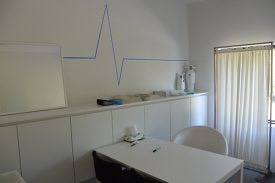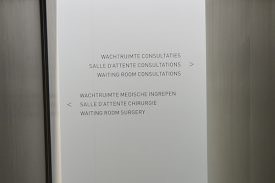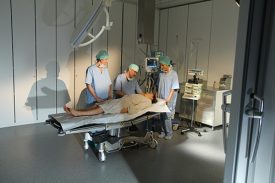Mastopexy is also known as breast lift. It is a surgical procedure designed to reshape or lift sagging or drooping breasts.
—
The BeauCare quality
Mastopexy is often suggested when breasts sag due to factors like weight loss, aging-related loss of elasticity, pregnancy, or breastfeeding, which can cause a reduction in firmness and skin elasticity in the breast tissue. This typically results in a prominent lower breast fold, where the nipple may descend below the fold.
It’s important to understand that mastopexy primarily addresses breast sagging without significantly altering breast size. However, it can be combined with breast augmentation or reduction procedures if desired. Before making any decisions, it’s crucial to gather comprehensive information and consult with a specialist who can provide objective answers to all your questions.
More information
On the quality of our services
Possible results of mastopexy
The primary goal of mastopexy is to restore the natural position and contour of the breasts by removing surplus skin and tightening the surrounding tissues.
Firmer breasts that won’t sag
When breasts lose their elasticity and firmness due to factors like aging, pregnancy, breastfeeding, or fluctuations in weight, they can begin to sag or droop.
Mastopexy addresses this issue by tightening the tissues, resulting in breasts that feel and look firmer.
Lift the breasts and change the position of the nipples
During your consultation, you’ll collaborate with your surgeon to determine the optimal lift height for your breasts to achieve proper nipple repositioning.
It’s crucial to understand that the final shape of your breasts post-mastopexy can vary based on factors such as your unique anatomy, the surgical approach, and the healing process after surgery.
Modify the shape or appearance of your breasts
In addition to lifting the breasts, mastopexy can enhance their symmetry, roundness, and projection to better suit your aesthetic goals.
- Symmetry involves ensuring both breasts are balanced in size and shape.
- Roundness focuses on achieving fullness, especially in the upper portion of the breast.
- Projection relates to how far the breasts extend outward from the chest wall.
Mastopexy surgery and post-operative care
Mastopexy is a significant decision that requires thorough consideration and preparation. Patients considering breast lift surgery should educate themselves and prepare questions beforehand.
During the initial consultation, the patient discusses her expectations and concerns with the surgeon. Together, they reach an informed decision regarding the desired size and shape of the breasts. The surgery is scheduled only after the patient has provided her informed consent.
« COULD A BREAST UPLIFT RESULT IN A LOSS OF SENSITIVITY OF THE NIPPLES AND THE BREASTS? »
The sensitivity of the nipples may temporarily change. Your nipples may get either less sensitive, even insensitive or rather very sensitive. This perception will get back to normal a couple of months after the breast uplift surgery.
Mastopexy surgery
During mastopexy, a plastic surgeon typically makes two primary incisions: one around the areola and another vertically from the areola to the lower breast fold.
Excess skin is removed, and glandular tissue is tightened to reshape the breasts. The nipple and areola, which remain connected to the glandular tissue, are elevated to a higher position. The skin above the nipple is then tightened beneath it, resulting in firmer and higher breasts.
In cases of significant breast sagging (ptosis), where the breasts are notably droopy, more skin may need to be removed to achieve an optimal breast shape. This may lead to additional scarring but is necessary for satisfactory results.
For those interested, mastopexy can include nipple correction or areola reduction. It can also be combined with breast implants if desired.
Post-operative care after mastopexy
During cosmetic surgery, we use very fine sutures to minimize the visibility of scars, which initially may appear reddish but gradually fade over time. Sutures are typically removed 12 to 14 days after the procedure.
To aid in healing, we recommend massaging scars with a moisturizing cream after sutures are removed. This practice accelerates the healing process and helps reduce scar visibility.
Depending on the surgical approach, drains may be placed under the skin to remove excess fluids, usually being removed 2 to 3 days post-surgery.
Patients are advised to wear a supportive bra for one month following surgery. This bra provides essential support immediately after the procedure to ensure optimal healing. Limiting arm and shoulder movements during the initial weeks helps prevent strain on the surgical area.
To promote optimal recovery, it’s crucial to avoid strenuous activities such as sports and heavy lifting during this period.
In rare cases, slight adjustments to mastopexy scars may be necessary. These corrections are typically performed under local anesthesia and consistently yield satisfactory results, ensuring the best outcome for patients.
« FOR HOW LONG WILL YOU SEE THE SCARS OF A BREAST REDUCTION? »
Our plastic surgeon uses an advanced technique for a breast reduction and uplift which results in scars which get quite invisible after one year.
In the beginning scars may be redish. The scars won’t be visible under normal clothing. Due to our advanced technology there will be no scars in the breast fold (the up side down T or the so-called anchor scar). The results are aesthetically better.
Risks associated with mastopexy
In general, the risks associated with mastopexy are minimal; however, we recommend avoiding surgery under the following conditions:
- Smoking: Smoking can significantly impair healing and increase the risk of complications.
- Systemic diseases: Conditions such as diabetes, obesity, heart problems, and high blood pressure can compromise healing due to reduced blood circulation.
- Nipple position: The lower the nipples are positioned on the breasts, the higher the risk of complications related to nipple sensation and blood supply.
As with any surgical procedure, mastopexy carries inherent risks. Your plastic surgeon will thoroughly discuss these potential risks with you, taking into consideration your individual health and circumstances.
The difference between mastopexy and breast reduction
From a cosmetic surgeon’s perspective, mastopexy and breast reduction are distinct surgical procedures serving different purposes. Mastopexy focuses on enhancing breast shape and repositioning, without altering breast size.
On the other hand, breast reduction aims to reduce breast size by removing excess tissue, fat, and skin, creating breasts that are more proportionate to the body.
However, in some cases, these procedures can be combined if a woman desires both size reduction and enhancement of breast position and shape.
Read more about breast reduction
Breast: Prices in Euros
| Breast enlargement with cohesive gel silicone-filled implants with micro textured surface from 200 cc to 600 cc |
3300 € VAT incl. |
| Replacement breast implants |
3300 € VAT incl. |
| Breast reduction |
3600 – 4950 € VAT incl. |
| Breast uplift without implants |
3600 – 4650 € VAT incl. |
| Breast uplift with implants |
5950 - 6950 € VAT incl. |
| Capsular contracture |
Additional cost of 950 € VAT incl. |

















